Yup, it is cold out there.
Gerhard Behrens |
| We’ve been at sea for two weeks. Every day is still an adventure no matter who you are on this ship. For the
science crew, a team is putting in the ADCP moorings. For others, the adventure for the day is cutting through lots
of thick ice. And no matter who you are, it is pretty cold out there for August 4th , uh…summertime at 80°N
lattitude. |
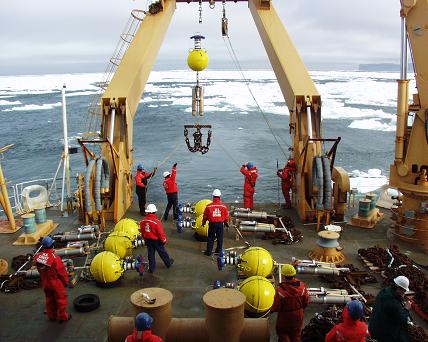
The mooring is ready to go into the ocean. From the bottom up there is: steel bars and chains for the weights;
the long tubes are batteries, the release tool, and a salt/temperature device; the big yellow ball is the float;
the top is the ADCP device with a PEIPS Avalanche Beacon. |
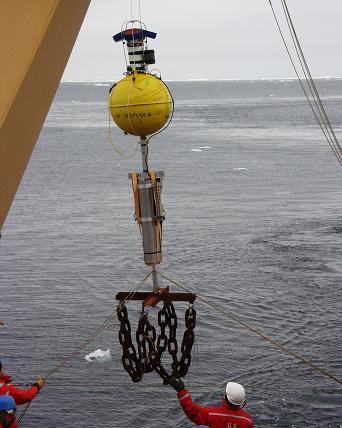
|
A mooring is a piece of science equipment that goes into the water and stays in the water. It is attached to a
heavy weight to keep it in place. A float is always part of a mooring so that when the scientists want the piece of
equipment back, it will float to the top. There is a special tool that allows the float to let go of the weight.
The mooring has a PEIPS Avalanche Beacon, which is an electronic tool that helps the scientists find the mooring.
Finally, there is a battery, which keeps everything running. |
| Today’s mooring is called an ADCP because the letters stand for Acoustic Doppler Current Profiler. Here is what
it does. Using sound waves that travel through the water, it can measure three things in this part of the ocean:
the speed of the water at any depth, which is called the current; the movement of the ice on top; and the thickness
of the ice. The mooring also measures the salt and temperature of the water because salt and temperature are
important parts of the water’s fingerprint. The scientists will get this mooring out of the ocean next March by
melting a hole in the ice. |
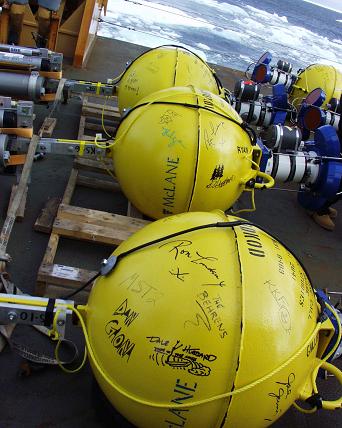
Science and USCG crew sign the floats. |
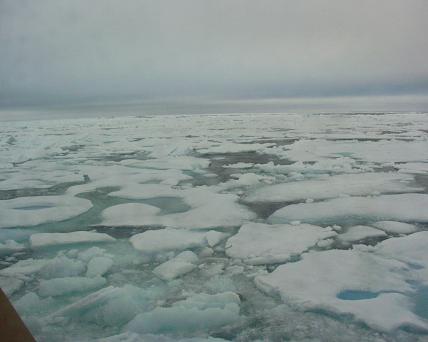
Some long stretches of sea ice. |
By studying the currents, and especially the changes in currents in a place like the Kennedy Channel, physical
oceanographers can learn more about the way water is moving in the Arctic and around the world. |
| We are on a ship called an icebreaker, and that is what we’ve been doing for part of the day. Many people on
the ship had an ice alarm this morning. As the hull cut through ice, the grinding, cracking, and crunching sound
echoed through the ship and woke everyone. Throughout the day, the ship has been plowing through big patches of sea
ice. |
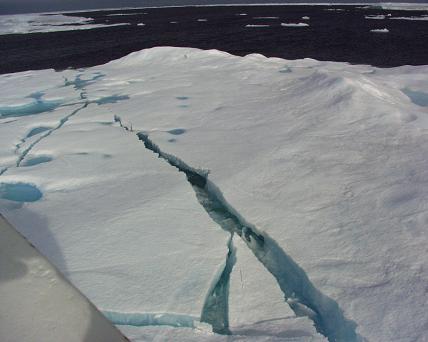
The bow cracks the ice... sometimes. |
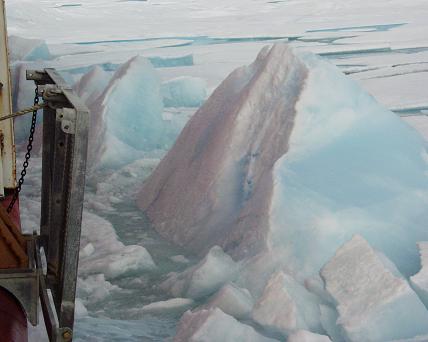
Huge chunks float down the side of the ship. |
When the ship cannot cut through the ice, it climbs up on the ice. In a manner of seconds, the weight of the
ship breaks through, and the ship can move forward again. |
| It is especially fun to be at the bow of the ship to see the hull collide with tons and tons of ice, break it
into huge chunks, and toss it aside. We marvel at the power of the ship, but we are also amazed at the strength and
beauty of the ice. |

The pilot tries to steer in a lead, which is an opening in the ice. |
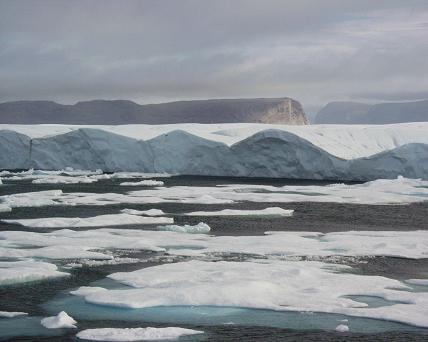
We still see icebergs (we cannot cut through those!). |
Oh, I did say it was cold. The temperature has been between 0 and -8 ° C (32 and 18° F). The wind is blowing at
20 knots (about 23 mph). Everyone is wearing lots of layers. It feels and looks like the Arctic today! |
